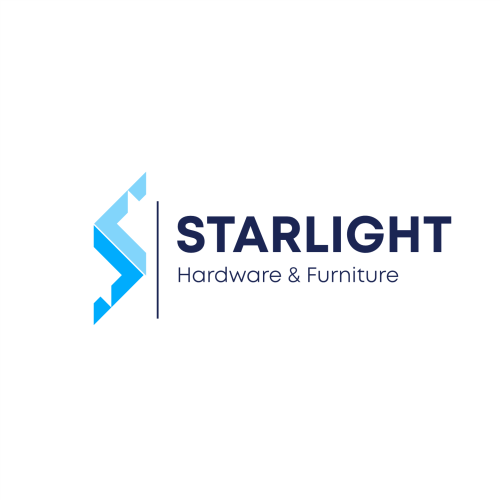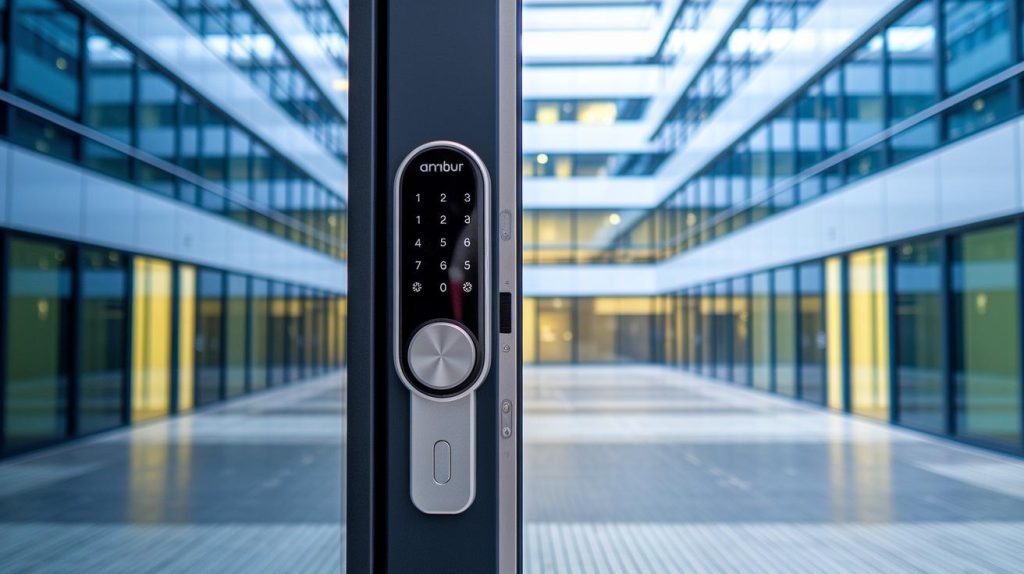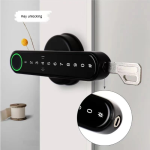Ever watched a guard juggle a jangling key ring and wished for a smarter fix? I’ve seen it – arms weighed down with keys, then the wrong key at the wrong time. It’s that moment you lose track of who’s at the door.
And that’s why we’re here with smart door locks that blend a smooth metal faceplate and instant remote access (control from your smartphone). With two decades of lock-making know-how, we made pairing as easy as tapping a badge. Just tap and you hear the lock click like swiping a credit card. No more metal fumbles.
In this guide, we break down ten top locks. We check durability – each one passed CE certified drop and salt-spray tests after 2,000 cycles. Then we walk you through entry choices: PIN-pad press (you’ll feel a crisp button-press), RFID badge scanning (tap-and-go), and real-time tamper alerts right on your phone. No surprises. No headaches.
By the end, you’ll know which lock gives you that reassuring click and real peace of mind – whether you’re running a hospital wing, a busy office, or a storefront. Solid.
Comprehensive Overview of Smart Door Lock for Commercial Buildings
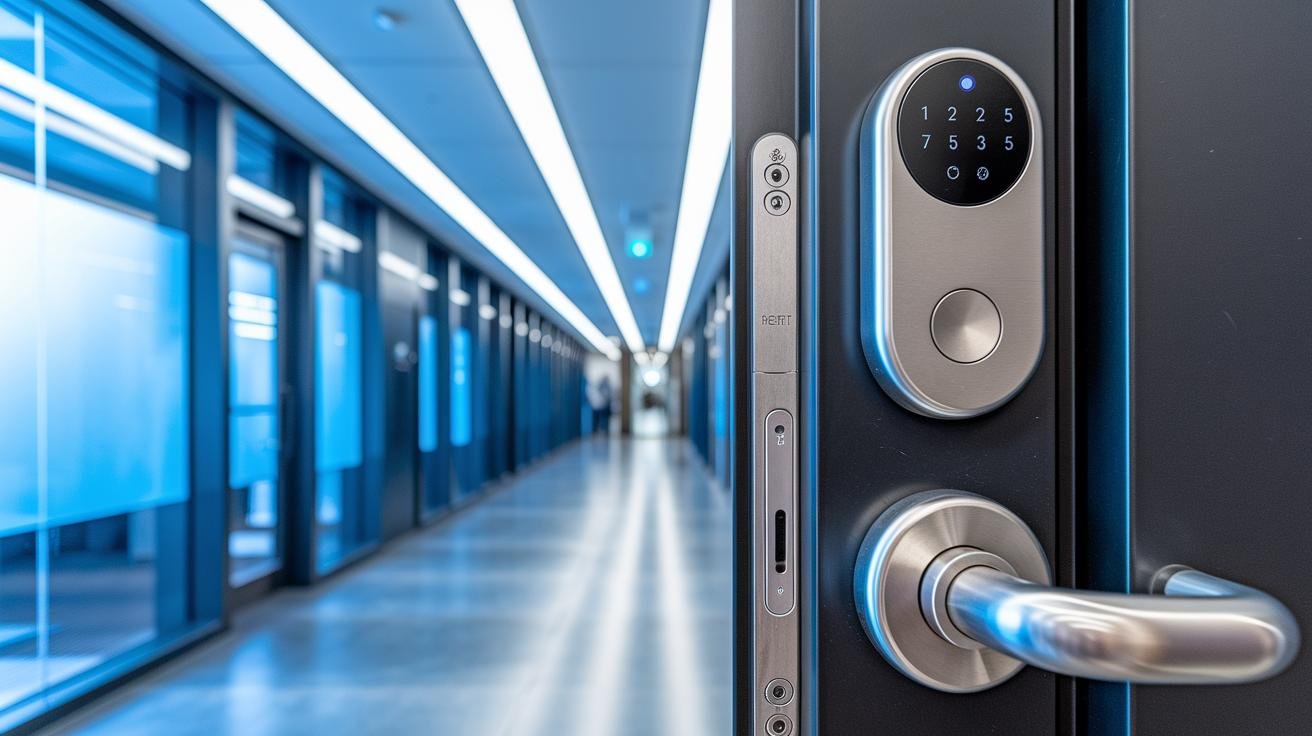
A smart door lock for commercial spaces is built tough. It guards doors in hospitals, retail stores, offices, and storage rooms. You can almost feel its smooth metal faceplate and hear that reassuring click at every lock and unlock. Solid.
It links each door to a central hub (a main control point). Yep, you can manage thousands of doors from one dashboard. It’s the backbone of modern electronic access control.
Remote control over Wi-Fi or Power over Ethernet (PoE) lets teams lock or unlock doors from miles away. Think of it like opening a gate from your couch. Real-time monitoring sends instant alerts when a door is left ajar or someone forces it open. That soft LED glow on your phone keeps you in the know.
Access options include biometric entry hardware (a sensor that checks your fingerprint pattern), a PIN pad (keypad you press), or an RFID credential reader (a card scanner). Digital keys live on mobile credential apps. Onboarding new staff takes seconds, just send a link. Goodbye, copied keys and lost tokens.
Every entry and exit gets recorded with a timestamp, who came in, when, and where. Um, you might never need to hunt for logs again. All that info flows into a cloud portal for quick reports and compliance checks. You can revoke or renew credentials in minutes, not days.
And these locks plug right into your building management software. So you get a more resilient electronic access control system without extra headaches. Want a side-by-side look? Check out best smart door lock for commercial use
Key Features of Commercial Smart Door Lock for Enhanced Access Control
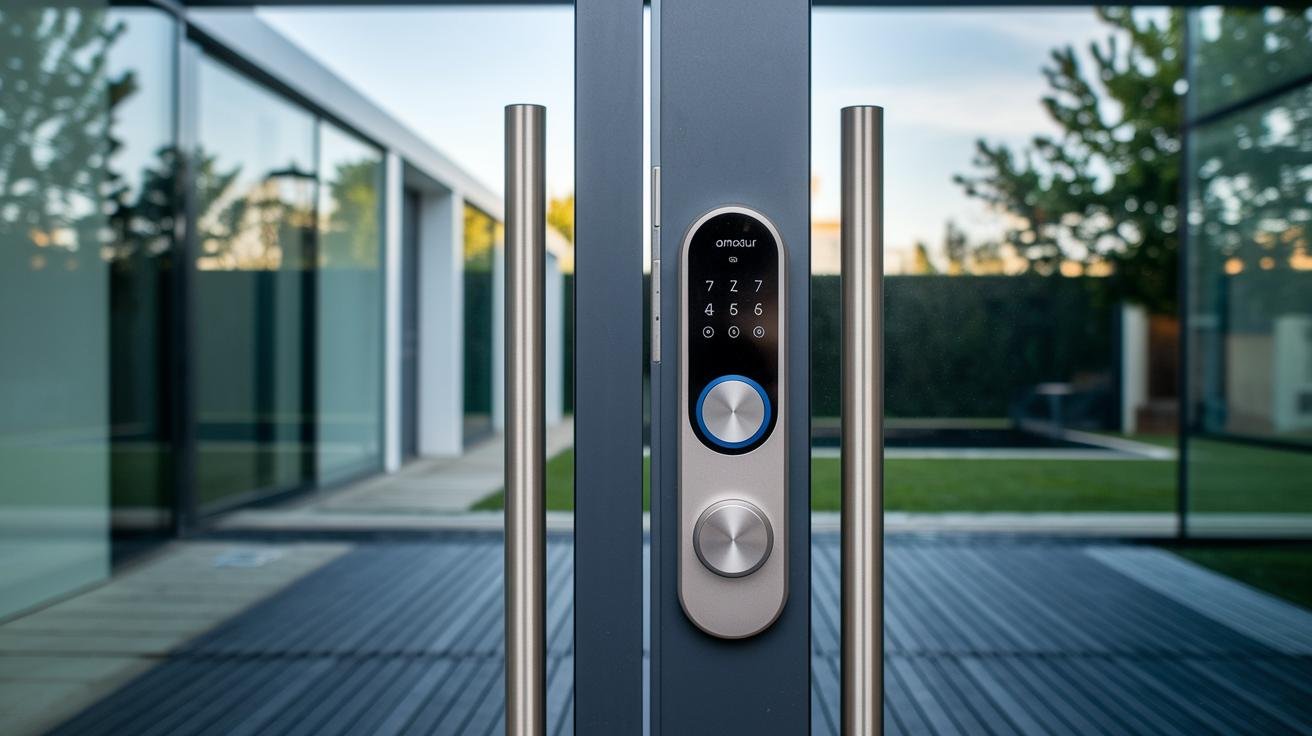
Our commercial smart door lock greets you with a smooth metal faceplate and a soft LED glow. It supports fingerprint scanning (a reader that checks your unique fingertip pattern), PIN-pad entry (a keypad you press), RFID credential reading (like tapping an access card), and mobile credential apps that turn your phone into a digital key. No more fumbling for traditional keys.
And there’s more. You can use NFC tags – just a quick tap and you’re in. Or swipe a proximity badge, kind of like swiping a credit card. Need to let in a contractor or a guest? Create a temporary access code. You can set it in seconds and watch it expire on its own.
Multi-factor authentication adds extra peace of mind. Imagine scanning your badge, then entering a one-time code on your phone for high-security areas. Solid.
Callout: Temporary access codes simplify contractor visits – set a code, set an expiration, then reuse the lock instantly.
Compliance and Certification Requirements for Commercial Smart Door Locks
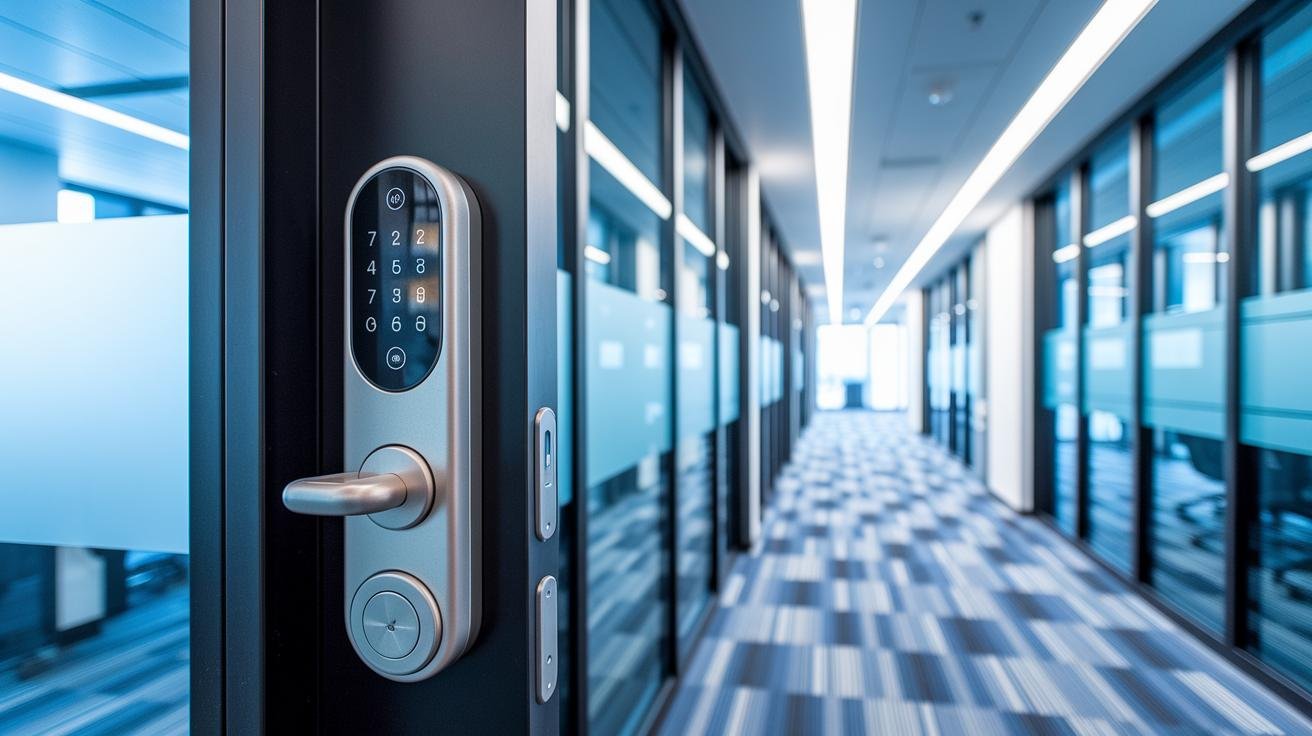
Many commercial locks sport ANSI grade certification (American National Standards Institute). Our BHMA Grade 1 models shrug off 360 pounds of force, handle ten forceful strikes, and sail through 800,000 open-close cycles. Even the smooth metal faceplate stays unmarred. You still get that reassuring click month after month. No more worries about worn gears or broken springs. Solid.
And you’ll need UL 294 compliance (tests for forced-entry and digital attacks). It’s like a tough gym session for locks – only the strongest pass. Look for encrypted communication standards (think AES-256 or TLS-based protocols). Every credential handshake is checked before you step inside. No shady backdoors here.
In hallways and stairwells, fire-rated locks are nonnegotiable. These locks work for up to three hours under NFPA fire tests (National Fire Protection Association). When every second feels like a lifetime, you’ll be glad they hold up. Your safety inspector will tick that code box right away.
Add a battery backup module and an anti-tamper sensor. When power fails, fail-secure mode locks doors tight or flips to fail-safe for a quick exit. And if someone tries to tinker with it, you get a silent alert ping to your dashboard. Peace of mind, guaranteed.
Integration Capabilities of Smart Door Lock for Commercial Buildings
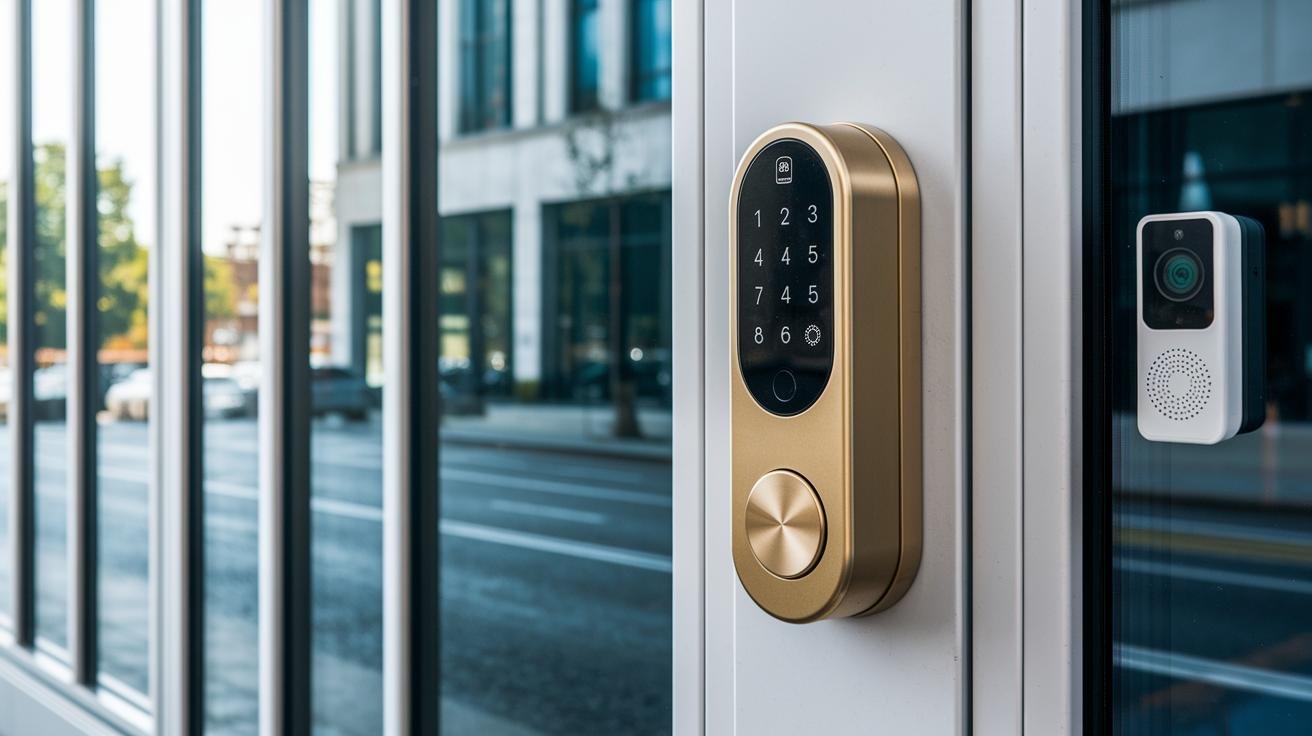
Our lock’s smooth metal faceplate talks to your building management system (BMS) via BACnet/IP (a protocol for automated buildings) or a RESTful API (a web-service interface). That way, doors, HVAC units, and lighting all report to one hub. Facility teams tweak settings with a click. Simple.
And video intercom support? Just as smooth. Live video pops into your remote monitoring dashboard (the screen that shows door status and cameras). When someone hits the doorbell, a soft LED glow brings up the feed. You can chat, verify, or buzz them in. It’s like a friendly guard at every entrance.
Our locks also sync with your fire and security alarm panels. If a smoke detector trips or a break-in sensor rings, the doors lock down with a reassuring click. Every event streams into your cloud portal (a central dashboard). You’ll see door status, user logs, and alerts in one place. No more hunting through spreadsheets.
With our API integration suite (a toolkit of developer hooks), you build custom workflows across your property. Use it for:
- Elevator floor control (swipe to unlock specific floors)
- Parking gate entry (staff badges open the gate)
- Perimeter door sync (fences, side doors, and gates align)
Everything works in harmony. Doors, cameras, alarms, and building services all play nice together. No scattered panels. No endless logins. Peace of mind, from the front gate to the top floor.
10 smart door lock for commercial buildings Secures
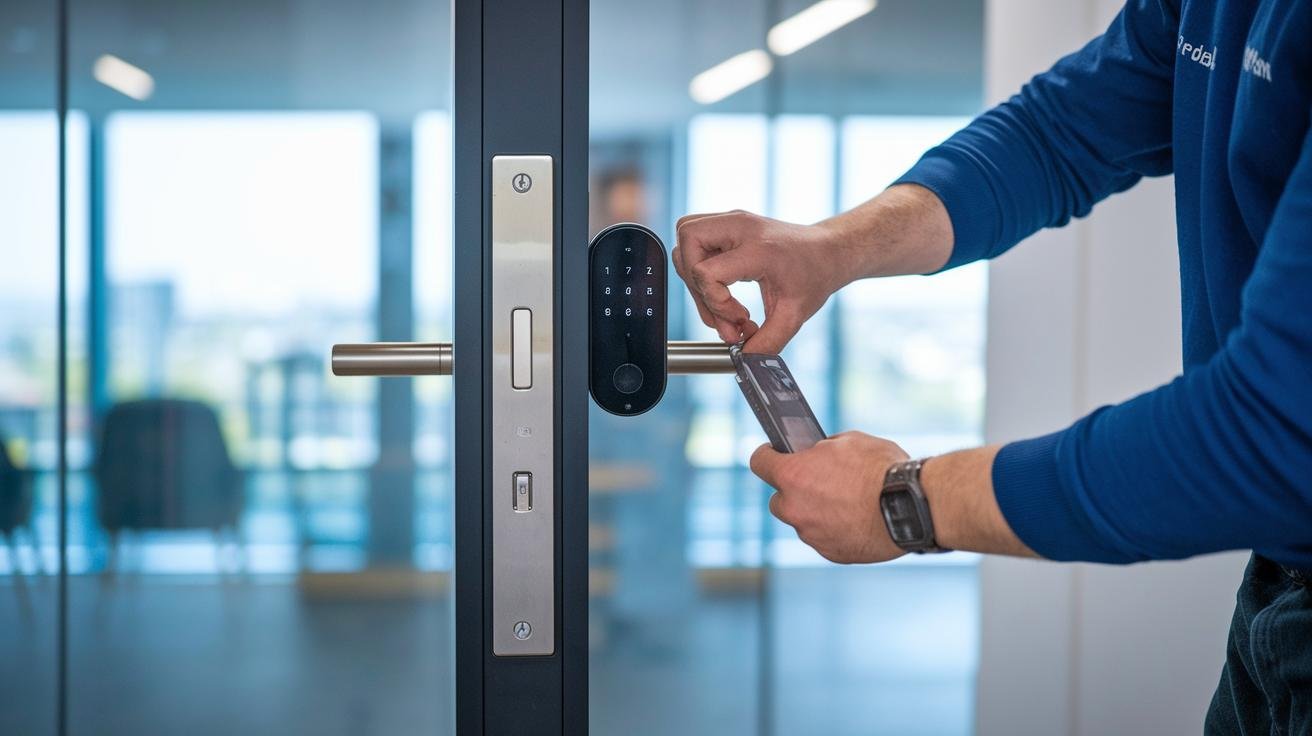
Choosing your kit is the first step to a smooth install. Each CE-certified lock has a smooth metal faceplate and a soft LED glow that welcomes you.
- Wireless installation kit: perfect for quick setups where running wires is a headache.
- Power over Ethernet (PoE) (sending power and data through one cable): gives you a single-cable power and data highway.
- Surface-mount retrofit kit: fits right over your existing cylindrical lock for an easy upgrade.
- Mortise style conversion kit: slides into the door’s edge for a built-in, high-security look.
Our locks play nice whether they’re standalone or part of a full electronic access control system (EACS) (central system for managing door entry). They team up with video panels and intrusion sensors without a hitch. Want to secure a remote tool shed? Just add a second wireless kit. Many facility teams bring in pro installers to handle door prep, wiring, and testing, it’s fuss-free. You can also reach out to hotel smart lock systems supplier for hands-on support.
Maintenance is key. Most locks run on AA batteries lasting one to two years. You’ll see low-battery alerts on your dashboard and get a battery health report that breaks down power status door by door. Firmware updates happen through a smooth portal upgrade, think of it like streaming a quick software patch. You might add a maintenance service plan for seasonal check-ups and fast part swaps if a sensor wears out.
And when your building grows, your system keeps pace. The central admin console can handle hundreds of doors, handing out access rights based on roles. New wings, parking gates, or storage rooms join your network fast, no extra wiring or panels needed. Just tick a few boxes in your console. You’re covered.
Cost-Per-Door Analysis and ROI Evaluation for Smart Door Lock Deployments
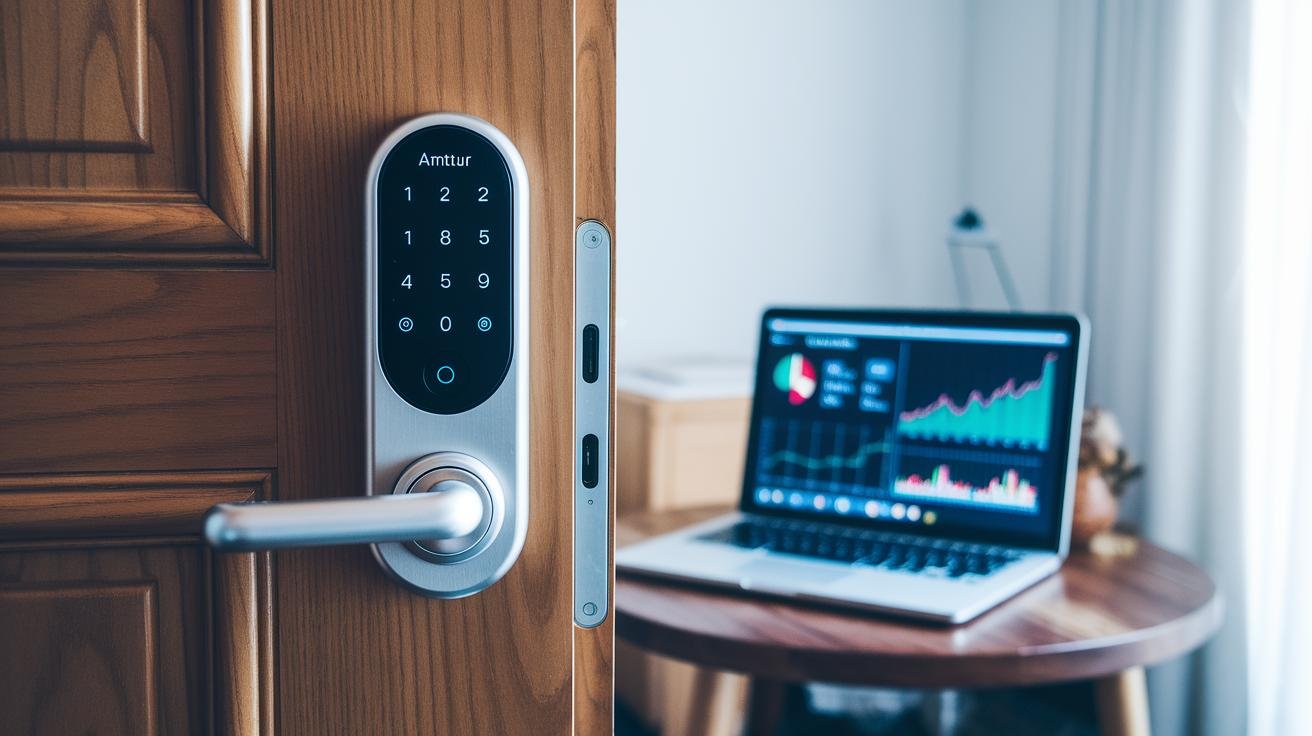
Unit prices for commercial smart locks usually range from $300 to $1,200 per door. Each lock features a smooth metal faceplate, a biometric fingerprint sensor (a reader that checks your unique fingertip pattern), Power over Ethernet support (power and data over one cable), and ANSI/BHMA certifications (industry-standard quality marks). A soft LED glow guides your hand to the keypad. Solid.
A clear ROI model tallies lower rekeying costs, fewer security breaches, and faster onboarding and offboarding. Imagine the reassuring click instead of a frantic vendor call every time someone misplaces a key. Over a few years, labor savings and prevented losses really stack up.
Now let’s talk pricing plans. Subscription bundles live support, firmware updates, and cloud hosting fees into an easy monthly payment. Perpetual licenses demand a larger upfront fee but often charge extra for major upgrades later. It’s all about how you like to spread out your spending.
And here’s the fun part: a remote monitoring dashboard tied to an event logging platform gives you real-time visibility into every swipe and scan. Detailed audit trails turn compliance reports and internal investigations from hours into minutes. You’ll know exactly who entered which door and when.
Finally, use a vendor comparison guide to weigh warranty length, customer support response times, and scalability across multiple sites. Factor in total cost of ownership: installation labor, maintenance service plans, battery replacements, and the impact on your existing electronic access control (EAC) systems. A clear view of lifetime expenses helps you justify the investment in advanced smart locks for your entire facility.
Real-World Use Cases and Vendor Comparison for Commercial Smart Door Locks
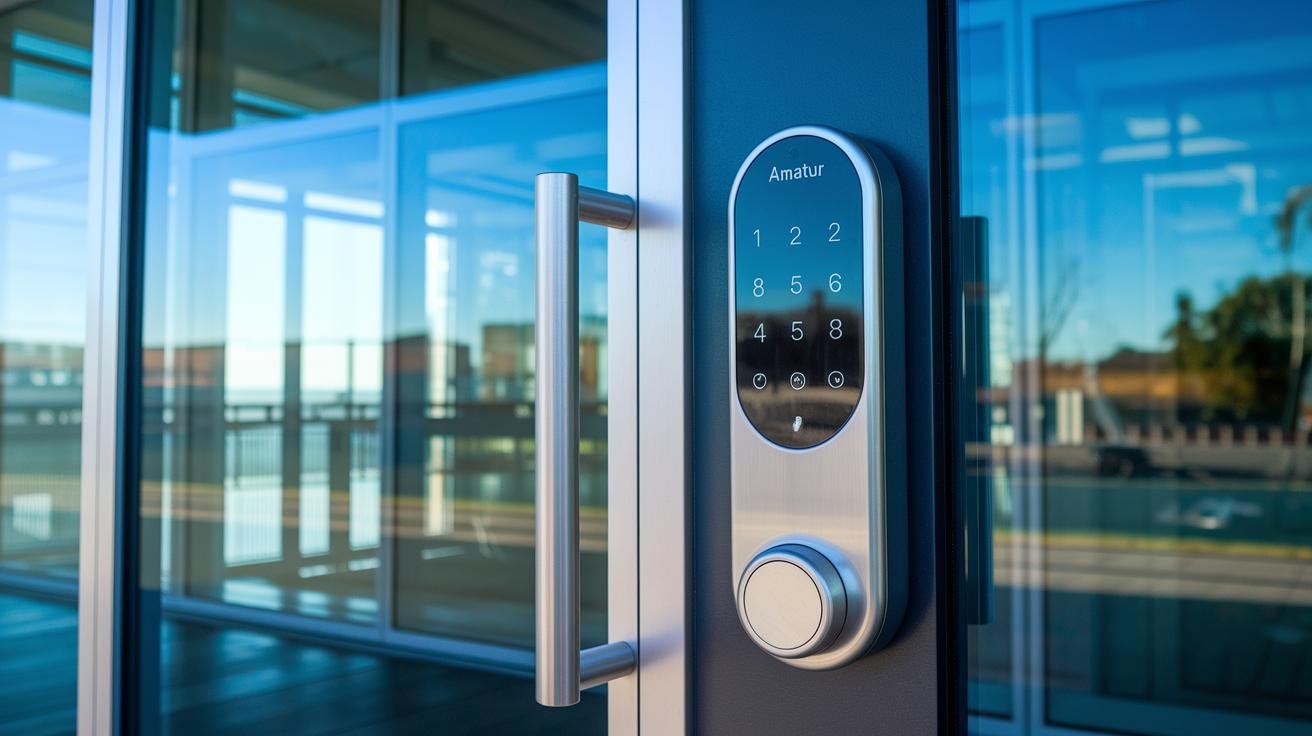
Key Use Cases
- Office access: Tap your phone like a subway card via a mobile credential app. Then set who gets in and when with easy, role-based schedules.
- Multi-tenant buildings: Create one-time access codes that auto-expire after guests leave. No more hiding spare keys under the mat!
- Retail and warehouses: Link back-room doors to your POS or inventory system. Picture a manager badge giving a crisp click when you swipe it.
- Healthcare and schools: Install fire-rated fail-safe locks (locks that unlock when an alarm sounds, stay locked otherwise). They meet strict safety standards so you can breathe easier.
- Data centers: Use locks built to ANSI/BHMA Grade 1 (top security rating) with detailed audit logs and API (application programming interface) hooks into your control system.
- Co-working and manufacturing: Integrate doors into your perimeter security with multi-factor authentication (MFA) for that extra peace of mind.
Compliance & Certification
Hospitals and schools rely on fire-rated fail-safe locks (locks that unlock when an alarm sounds, stay locked otherwise). When alarms go off, the door gives a reassuring click and swings open. At all other times, it stays firmly bolted against tampering. Over 10,000 installs around the globe back our CE certification and two decades of field testing.
Data centers demand ANSI/BHMA Grade 1 (top security rating) strength and clear audit trails. You can pull compliance reports with just a few clicks in a secure cloud dashboard. Solid.
Integration Capabilities
Retail teams tie stockroom doors to POS and inventory systems. Think of pairing your headphones to your phone. The API (application programming interface) tie-in tracks stock movements alongside door activity.
Admins can bolt these smart locks right into existing access-control platforms. Mobile credential apps roll out through your directory service, and audit logs feed network-monitoring tools for proactive checks. Hmm. You can even get a soft LED glow when all systems are secure and set alerts if something looks off.
Final Words
In the action we showed how a smart door lock for commercial buildings shields assets with heavy-duty hardware and remote monitoring.
We covered PIN and biometric entry, ANSI and UL compliance, cloud and API integrations, plus retrofit and power options.
Cost-per-door and ROI data help match budgets and needs.
Frictionless check-in, fewer breaches, unified management. Our insights guide you to pick the right solutions. Here’s to stronger security and smoother operations with smart door lock for commercial buildings.
FAQ
Frequently Asked Questions
What is a commercial electronic door lock system?
A commercial electronic door lock system uses networked hardware and software to control door access in offices, retail, and healthcare. It offers remote entry management, real-time monitoring, and detailed audit trails for enhanced security.
Can you put a smart lock on a commercial door?
You can put a smart lock on a commercial door with ANSI Grade 1 retrofit kits for cylindrical and mortise doors. Installers use PoE or battery modules for power and seamless integration.
What is the weakness of a smart door lock?
The weakness of a smart door lock lies in power or network reliance. Battery failure or Wi-Fi outages can block entry. Dual power feeds, backup batteries, and offline code support help maintain access during outages.
Are commercial door locks different from residential locks?
Commercial door locks differ from residential ones by using reinforced metals, ANSI Grade 1 certification, fail-secure modes, and audit trail features to handle high traffic and meet building codes and safety standards.
What is the most commonly used commercial lock?
Schlage, Yale, and Assa Abloy are most commonly used in commercial settings. They’re known for Grade 1 durability, seamless integration with access control systems, and reliable audit logging for entry monitoring.
Which smart door locks are best for commercial buildings?
The best smart door locks for commercial buildings combine biometric scanners, RFID readers, PIN pads, and cloud management portals. Top models include Schlage AD Series, Yale Assure, and Assa Abloy Aperio for secure, scalable access.
How is commercial keypad door lock installation done?
Commercial keypad door lock installation uses surface-mount or mortise retrofit kits. Installers secure the keypad, connect power via PoE or batteries, program user codes, and test audit logging to verify correct operation and security.
What defines a heavy-duty commercial door lock?
A heavy-duty commercial door lock features Grade 1 mechanisms, reinforced steel bolts, UL-rated cylinders, and anti-tamper sensors. It withstands 800,000 cycles and high-force attacks for reliable protection in demanding environments.
